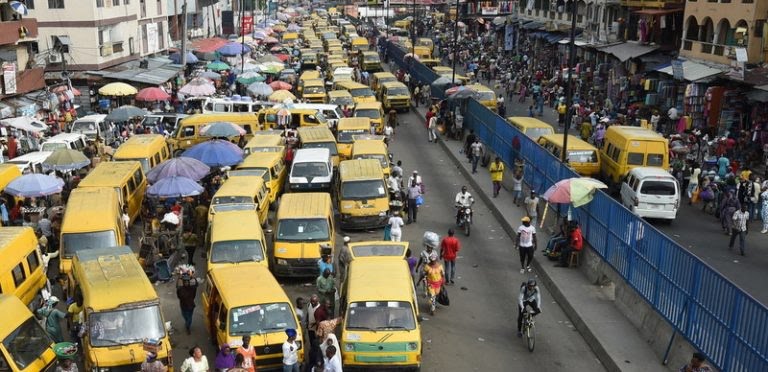Air Quality Spotlight: Addis Ababa, Ethiopia most polluted major city – IQAir

Air Quality Report: Addis Ababa – A Sustainable Development Goal Perspective
Report Date: August 6, 2025
1.0 Executive Summary
This report details the state of air quality in Addis Ababa, Ethiopia, as of August 6, 2025. The city’s air quality is classified as “unhealthy for sensitive groups,” with a PM2.5 concentration significantly exceeding World Health Organization (WHO) guidelines. This situation poses a direct challenge to the achievement of several Sustainable Development Goals (SDGs), particularly SDG 3 (Good Health and Well-being) and SDG 11 (Sustainable Cities and Communities). The primary drivers of pollution—including vehicular emissions, biomass burning, and industrial activities—highlight critical gaps in sustainable infrastructure (SDG 9) and access to clean energy (SDG 7). Addressing this environmental crisis is imperative for advancing the 2030 Agenda for Sustainable Development in Ethiopia.
2.0 Current Air Quality Status and Public Health Impact
2.1 Air Quality Index (AQI) and PM2.5 Levels
On the date of this report, Addis Ababa recorded an Air Quality Index (AQI) of 147. The primary pollutant, PM2.5, was measured at a concentration of 54.2 µg/m³. This level is over 3.6 times the WHO’s recommended 24-hour mean guideline of 15 µg/m³, positioning Addis Ababa among the most polluted major cities globally.
2.2 Implications for SDG 3: Good Health and Well-being
The recorded pollution levels present a significant public health risk, directly undermining SDG 3, which aims to ensure healthy lives and promote well-being for all at all ages. Exposure to such high concentrations of PM2.5 is particularly hazardous for sensitive populations, including children, the elderly, and individuals with pre-existing respiratory and cardiovascular conditions. The failure to maintain clean air obstructs progress towards Target 3.9, which seeks to substantially reduce the number of deaths and illnesses from hazardous chemicals and air, water, and soil pollution and contamination.
3.0 Analysis of Pollution Sources in the Context of Sustainable Development
The poor air quality in Addis Ababa is a multifaceted problem stemming from sources that are directly linked to key development challenges. An analysis of these sources reveals their connection to specific SDGs:
- Vehicular Emissions: Contributing up to 29% of PM2.5, emissions from a largely older fleet of diesel-powered vehicles highlight a critical need for investment in sustainable transport infrastructure, a core component of SDG 9 (Industry, Innovation, and Infrastructure) and SDG 11 (Sustainable Cities and Communities).
- Biomass Burning: Widespread residential and commercial use of wood, charcoal, and crop residue for cooking and heating points to a significant deficit in access to clean and affordable energy, directly relating to SDG 7 (Affordable and Clean Energy).
- Dust and Industrial Activity: Dust from construction, quarrying, and unpaved roads, combined with emissions from industrial facilities like cement plants, underscores the challenge of promoting inclusive and sustainable industrialization (SDG 9) while building resilient infrastructure.
- Open Waste Burning: The practice of burning refuse, including traditional events, is a major contributor to peak pollution events. This reflects inadequate municipal waste management systems, a key target within SDG 11 for creating safe and sustainable cities.
4.0 Current Interventions and Strategic Recommendations for SDG Alignment
4.1 Existing Government Initiatives
The Ethiopian Environmental Protection Authority has initiated a nationwide pollution reduction campaign. This effort aims to raise public awareness and enforce environmental regulations, representing a foundational step towards mitigating air pollution sources. However, a more integrated, SDG-focused strategy is required for long-term success.
4.2 Recommendations for an Integrated SDG-Based Approach
To effectively combat air pollution and accelerate progress on the 2030 Agenda, the following strategic actions are recommended:
- Strengthen Public Health Protections (SDG 3): Implement a robust public alert system to inform citizens, especially vulnerable groups, of high-pollution periods and recommend protective measures such as limiting outdoor activity.
- Accelerate the Clean Energy Transition (SDG 7): Develop and fund programs to promote the adoption of clean and modern cooking and heating technologies, reducing reliance on biomass fuels in households and commercial enterprises.
- Promote Sustainable Urban Mobility and Industry (SDG 9 & 11): Introduce stricter vehicle emission standards, incentivize the modernization of public and private vehicle fleets, and enforce pollution controls on industrial and construction activities.
- Develop Sustainable Waste Management Systems (SDG 11): Invest in comprehensive municipal waste collection and processing systems to eliminate the practice of open waste burning.
Analysis of Sustainable Development Goals in the Article
1. Which SDGs are addressed or connected to the issues highlighted in the article?
The article on air quality in Addis Ababa primarily addresses two Sustainable Development Goals (SDGs):
-
SDG 3: Good Health and Well-being
This goal is central to the article, which frames air pollution as a direct health issue. The text explicitly states that the air quality is “unhealthy for sensitive groups” and poses a “health concern for sensitive populations, such as those with respiratory or cardiovascular conditions.” This directly connects the environmental problem of air pollution to its adverse effects on human health and well-being.
-
SDG 11: Sustainable Cities and Communities
The article’s focus is on Addis Ababa, a major urban center. It discusses issues inherent to urban environments, such as pollution from “vehicle exhaust,” “construction,” “industrial emissions,” and “open waste burning.” By examining the causes and impacts of poor air quality within a city, the article directly relates to the goal of making cities and human settlements inclusive, safe, resilient, and sustainable.
2. What specific targets under those SDGs can be identified based on the article’s content?
Based on the issues discussed, the following specific targets can be identified:
-
Target 3.9: By 2030, substantially reduce the number of deaths and illnesses from hazardous chemicals and air, water and soil pollution and contamination.
The article’s entire premise is built around the health risks of air pollution. It highlights the high concentration of PM2.5 (54.2 µg/m³), a hazardous pollutant, and its potential to cause illness, especially for “sensitive groups.” The discussion of pollution sources like vehicle exhaust, biomass burning, and industrial emissions directly points to the need to mitigate air pollution to prevent related health problems, aligning perfectly with this target.
-
Target 11.6: By 2030, reduce the adverse per capita environmental impact of cities, including by paying special attention to air quality and municipal and other waste management.
This target is directly addressed as the article’s core subject is the air quality in Addis Ababa. It details the “adverse per capita environmental impact” by ranking the city as one of the “most polluted major city in the world.” Furthermore, it identifies key urban challenges that need management, specifically “air quality” and “waste management” (evidenced by the mention of “open waste burning”). The initiatives mentioned, such as the “nationwide pollution reduction campaign,” are efforts to achieve this target.
3. Are there any indicators mentioned or implied in the article that can be used to measure progress towards the identified targets?
Yes, the article provides specific quantitative and qualitative indicators that can be used to measure progress:
-
Indicator for Target 3.9 and 11.6: PM2.5 Concentration
The article explicitly mentions the concentration of fine particulate matter (PM2.5) as “54.2 µg/m³.” This is a direct measurement for Indicator 11.6.2 (Annual mean levels of fine particulate matter (e.g. PM2.5 and PM10) in cities). It also serves as a primary measure for assessing health risks related to air pollution, making it a key data point for tracking progress on Indicator 3.9.1 (Mortality rate attributed to household and ambient air pollution), as PM2.5 levels are a major determinant of this mortality rate.
-
Indicator for Target 3.9 and 11.6: Air Quality Index (AQI)
The article states the Air Quality Index (AQI) is 147. The AQI is a composite indicator that synthesizes complex air pollution data (including PM2.5) into a single number to communicate the level of health concern. It is a practical tool for monitoring urban air quality (Target 11.6) and alerting the public to health risks (Target 3.9).
-
Qualitative Indicators for Target 11.6
The article implies other indicators by listing the sources of pollution. The prevalence of “open waste burning,” reliance on “diesel-powered vehicles,” and use of “biomass burning” for cooking and heating are qualitative indicators of unsustainable urban practices. A reduction in these activities would signify progress toward Target 11.6.
4. Summary Table of SDGs, Targets, and Indicators
| SDGs | Targets | Indicators Identified in the Article |
|---|---|---|
| SDG 3: Good Health and Well-being | Target 3.9: Substantially reduce deaths and illnesses from air pollution. |
|
| SDG 11: Sustainable Cities and Communities | Target 11.6: Reduce the adverse per capita environmental impact of cities, paying special attention to air quality and waste management. |
|
Source: iqair.com

What is Your Reaction?
 Like
0
Like
0
 Dislike
0
Dislike
0
 Love
0
Love
0
 Funny
0
Funny
0
 Angry
0
Angry
0
 Sad
0
Sad
0
 Wow
0
Wow
0












































































